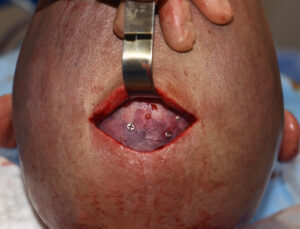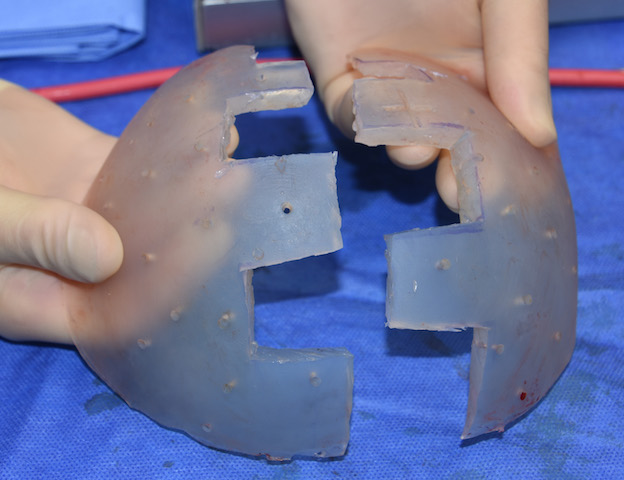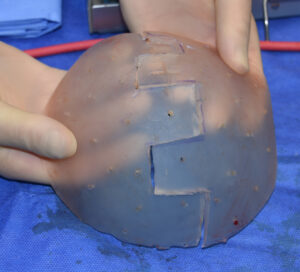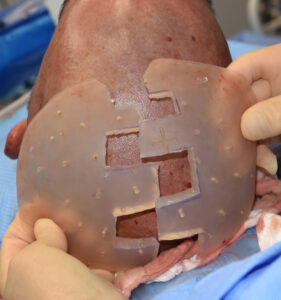Custom skull implants have proven to be the superior method for aesthetic head shape changes. Between a preoperative thought process as to the area of skull coverage and the necessary shape and dimensions needed for the desired aesthetic effecet, it provides an assured smooth outer surface with feathered edges. Despite all of these advantages the one potential disadvantage is how can such a skull implant that covers the needed surface area of bone and/or temporalis fascia be placed through an acceptable sized incision?
For most custom skull implants the elastic deformation property of solid silicone allows the implant to be introduced through relatively small scalp incisions. But this does not work for all skull implants based on their size or if the incisional length is limited for aesthetic reasons.
An alternative strategy when the skull implant will not fit through the incision is to change the size of the implant. (presuming increasing the incisional length is not an option) This means sectioning the implant into two pieces or cutting the implant in half. The two pieces can then be introduced separately and then reassembled once past the incision and inside the created implant pocket.


The second key technical point is that a large tissue pocket is needed to allow the implant re-assembly. Sufficient pocket room is needed to maneuver the two halfs of the implant around until they can be overlapped and aligned to become a single implant piece again.
Most custom skull implants are placed as an in intact device. But when needed this technique can be very effective when increasing the incisional length is not desired.
Dr. Barry Eppley
Indianapolis, Indiana





